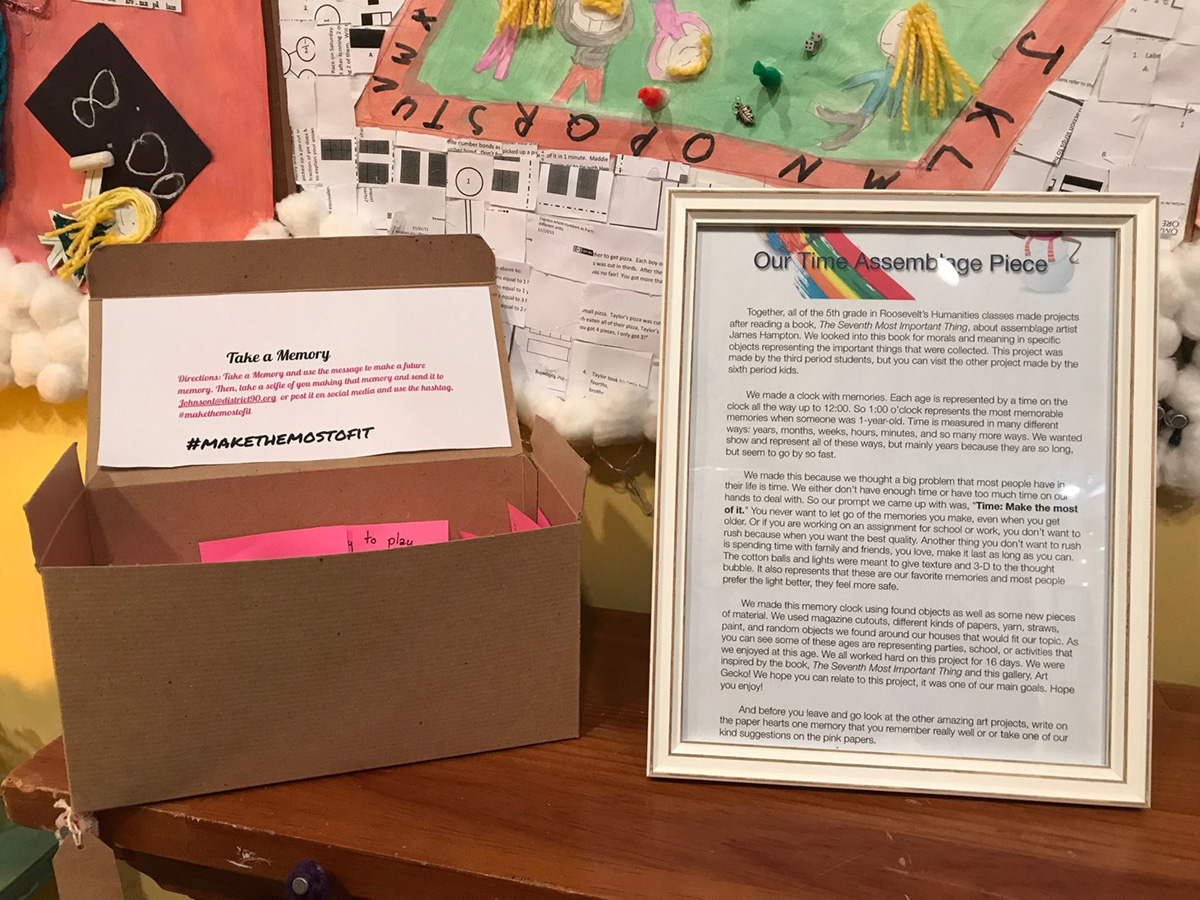What’s Most Important?
By Lindsay Johnson
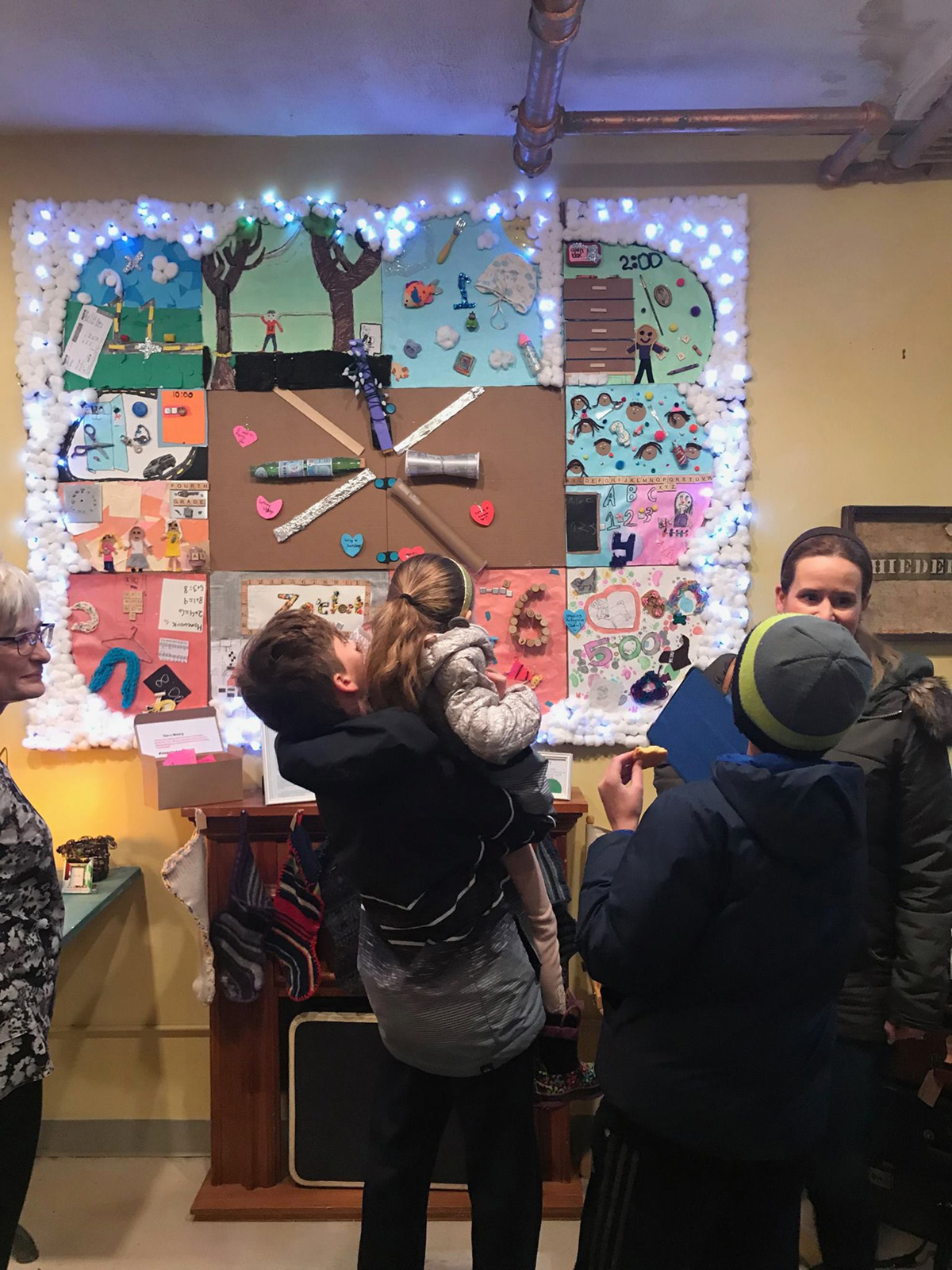
Inspired by the novel The Seventh Most Important Thing by Shelley Pearsall, and the work of real-life artist James Hampton, students use found materials to co-create 3D works of art that examine the relationship between community, time, access to, and stewardship of finite resources.
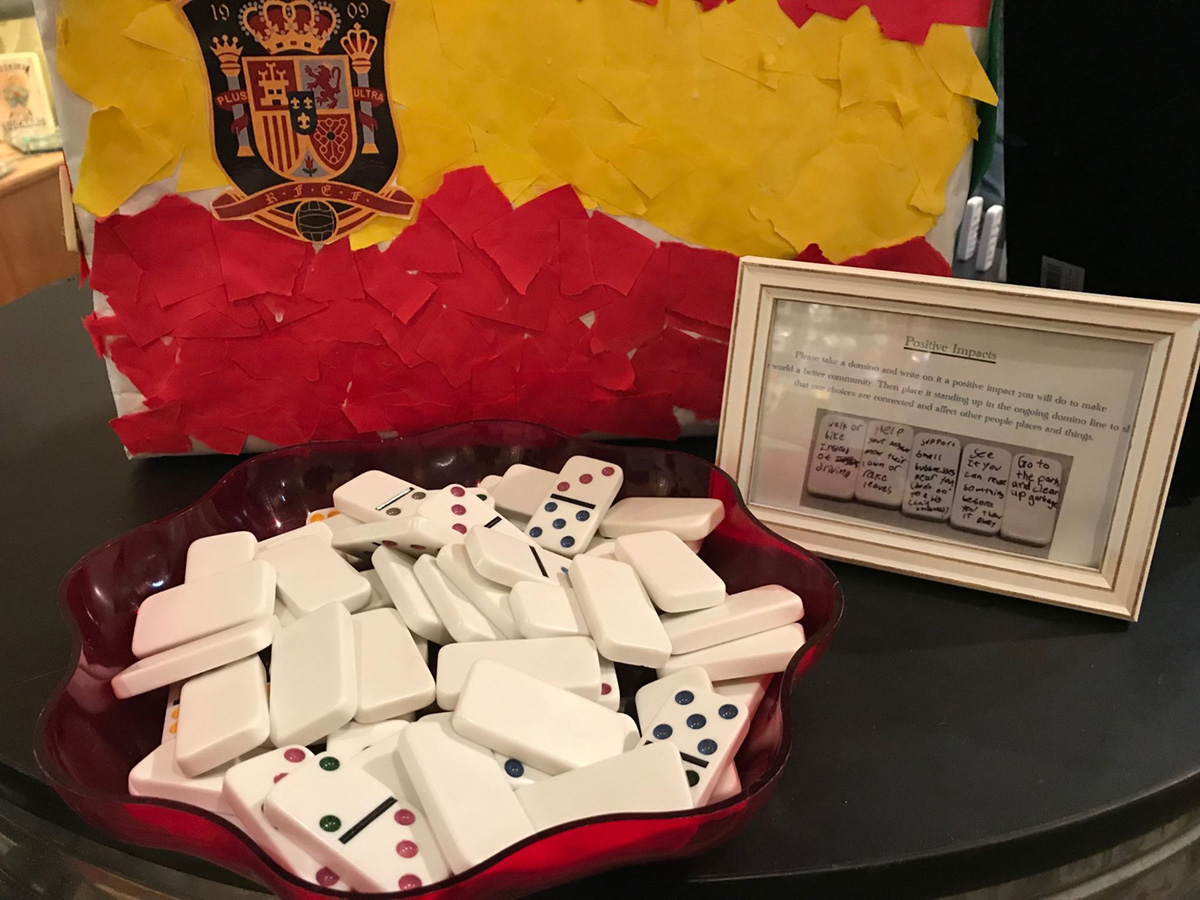
Our objective was to invite the community to reflect on if, and how, we spend our time and resources meaningfully.
Our guiding question was:
- How does a community determine what is most valuable?
Our two classes then branched in different directions.
Our morning class wondered:
- Why is time considered valuable?
- How is time measured?
- How is time spent?
- How is time remembered?
Our afternoon class wondered:
- What resources are specific to our community that we consider valuable?
- What do we have access to that others do not?
- How do we use, protect, and preserve these materials?
- What is our responsibility to the broader community, who might not have the same access to materials?

Documentation + Assessment Strategies
Students documented their work using writing and photographs. Our school is a 1:1 iPad environment. To document the project, students took photos during discussions, brainstorming, and creation. Students wrote reflections and sketched using the Notability app.
We determined to assess the impact of the project on the community by using the Flip Grid app. Gallery visitors left their impressions of the works of art and shared their reflections on the topic: What memories were important measures of time? What decisions are they currently making that impact others?
Learning Activities
This unit was implemented at the beginning of the school year and our class met for forty minutes every day for approximately five weeks. Immediately before this project, students learned about the difference between cooperation and collaboration, and were given many examples and opportunities to practice. This foundation proved helpful when co-constructing art because they understood how to integrate each other’s ideas.
STEP 1
Literary Connection
Students read the novel The Seventh Most Important Thing, by Shelley Pearsall.
Students engaged in discussions about themes and created artistic responses to the text.
Students discussed how visual elements can be representational and interpreted different based on audiences.
STEP 2
Exploration
Students reviewed other contemporary assemblage artists including Arman, Arthur Ganson, James Hampton, Lisa Nordstrom, Michael Rakowitz, and Tyree Guyton. Students discussed the community, the message, materials, and impact of the work by these artists.
STEP 3
Reflection
In table discussions, students reflected on the word community. How would we define our community? Who is in it? What geography do we have that is specific to our location? What issues are specific to our community? We documented our responses in a list on the chalkboard and discussed which were most important. The morning class was most invested in feeling rushed, while the afternoon class was most invested in taking care of our local forest preserve.
STEP 4
Inspiration
Together we reviewed contemporary artists who work with issues of time and the stewardship of resources. Here is a link to a slideshow we discussed together. Students described what they saw, then viewed video of the piece in action or of an artist describing the work. They discussed how it related to the theme and shared their reaction to the piece.
STEP 5
Ideation
Students individually brainstormed, through written reflections and sketches, their ideas for the form of our work. Students presented their ideas to their table, and then to the entire class. Through voting and discussions, the class agreed upon the form, the division of labor, and the interactive activity viewers would engage in.
STEP 6
Creation
Students went on a walking field trip around the school grounds to look for interesting materials. Additionally, after conversations with their families, students brought in relevant materials from home. In pairs, our morning class constructed a 3D memory wall of moments from their ages, and used mod podge to cement items to a 12x12 cardboard square. When joined, it resembled a clock. The middle piece held the hands of the clock and was a participatory place for the audience to record and paste their own memories of when they made the most of their time. Our afternoon class constructed a papier mache globe from magazines, battery operated LED lights, and found objects that represented valuable places and things. The globe was to be displayed surrounded by blank dominoes, on which patrons were encouraged to write an action item they planned to do to support or protect valuable places and things in their community. The dominoes, as with the lights on the globe, implied our connectedness and ability to make a big impact.
STEP 7
Presentation
Our work was displayed at a local assemblage art gallery. Parents, peers, and teachers were invited to the opening night, which was held in collaboration with the monthly local gallery walk. Attendees were encouraged to leave artist feedback using the FlipGrid app on their cell phones. Signage in the gallery gave directions for how to use the app.
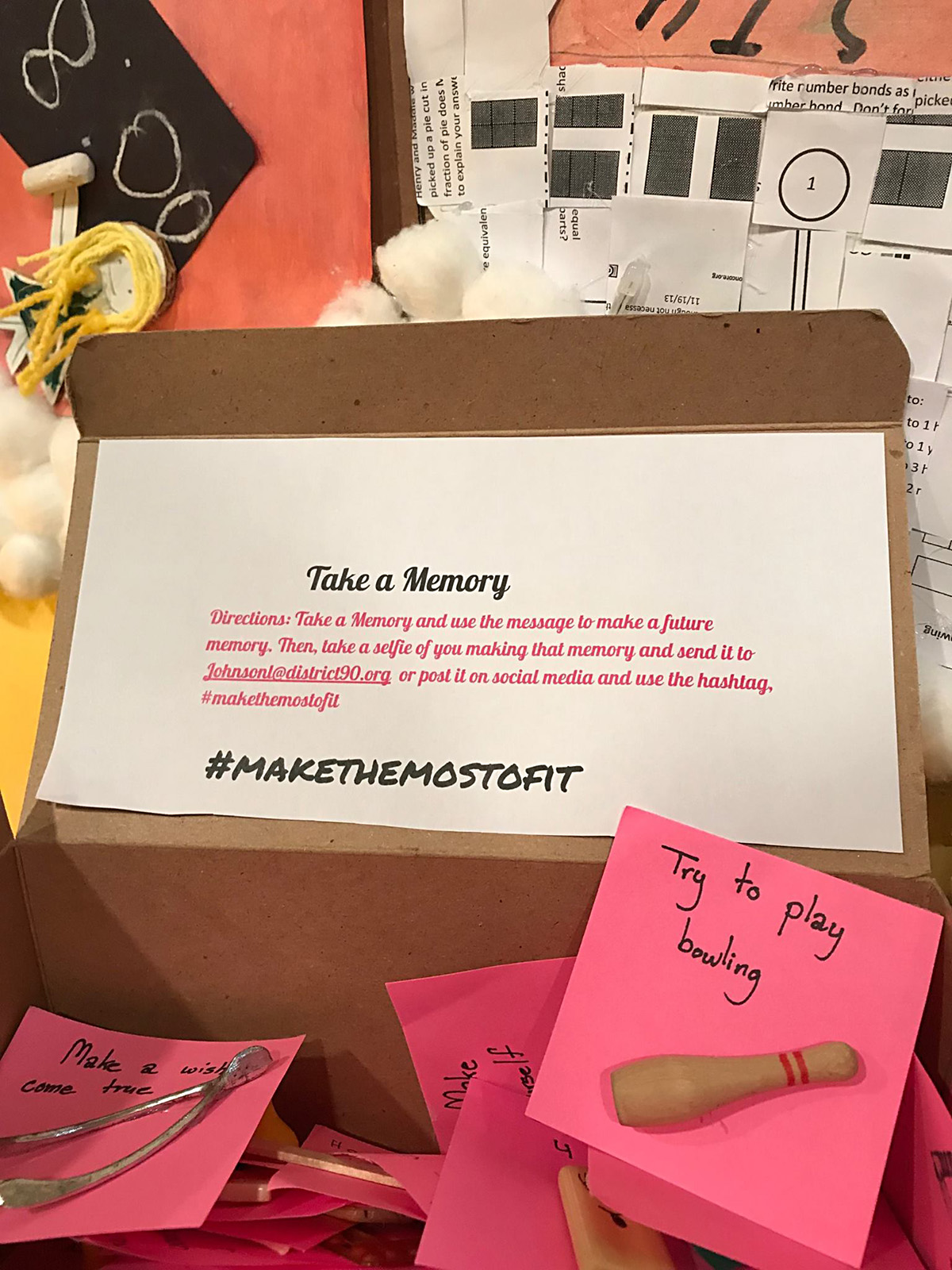
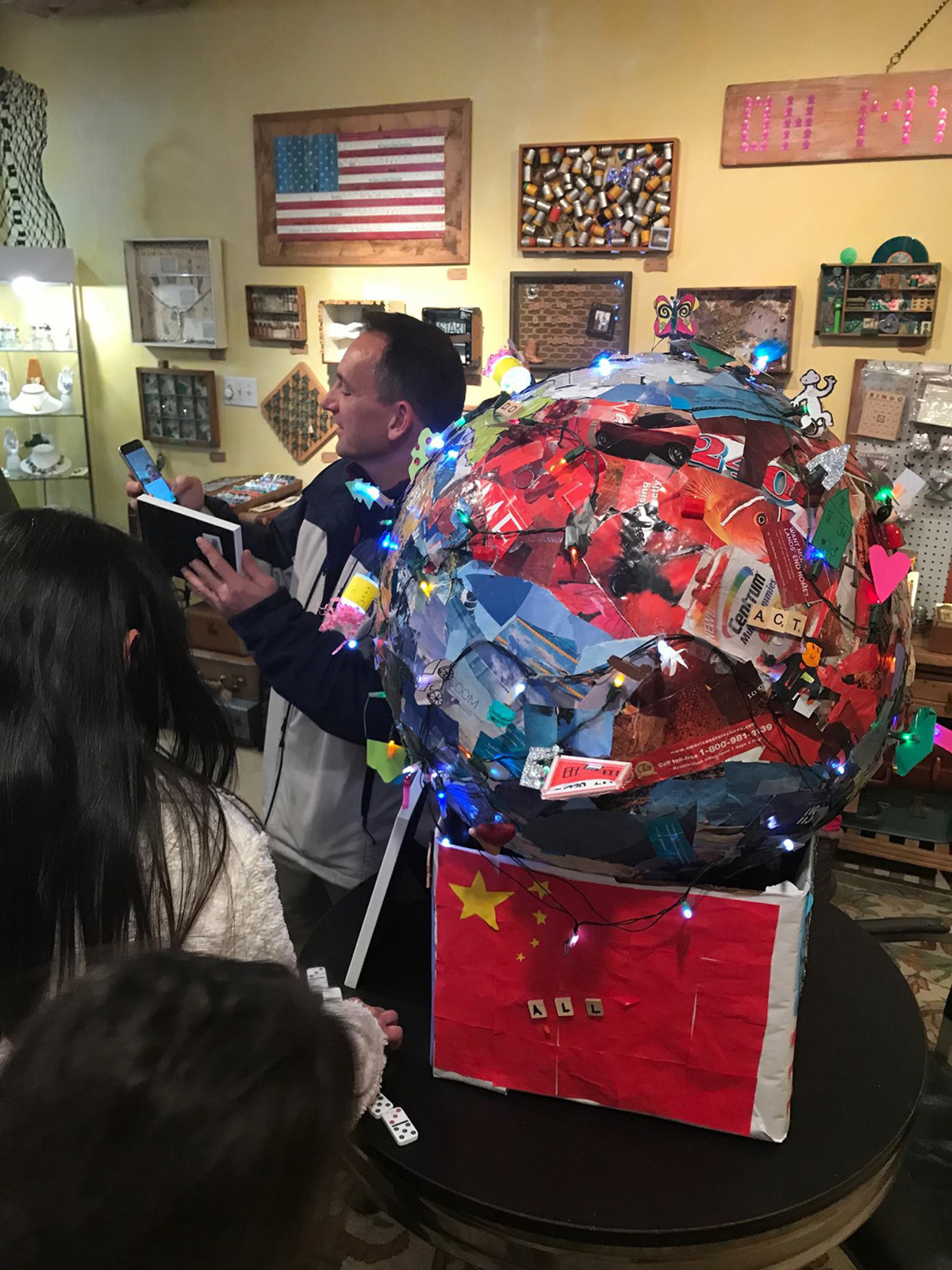
Materials
- Found objects from school, home, neighborhood
- Cardboard
- Hot/Cold Glue Guns & Glue
- Tacky Glue
- Mod Podge
MCA Connections
The Arrogant May Not Prevail by Michael Rakowitz was of huge influence in our project. The piece incorporated everyday objects and encouraged the viewer to consider community. The museum’s online photographs were of high quality and helpful to show our students.
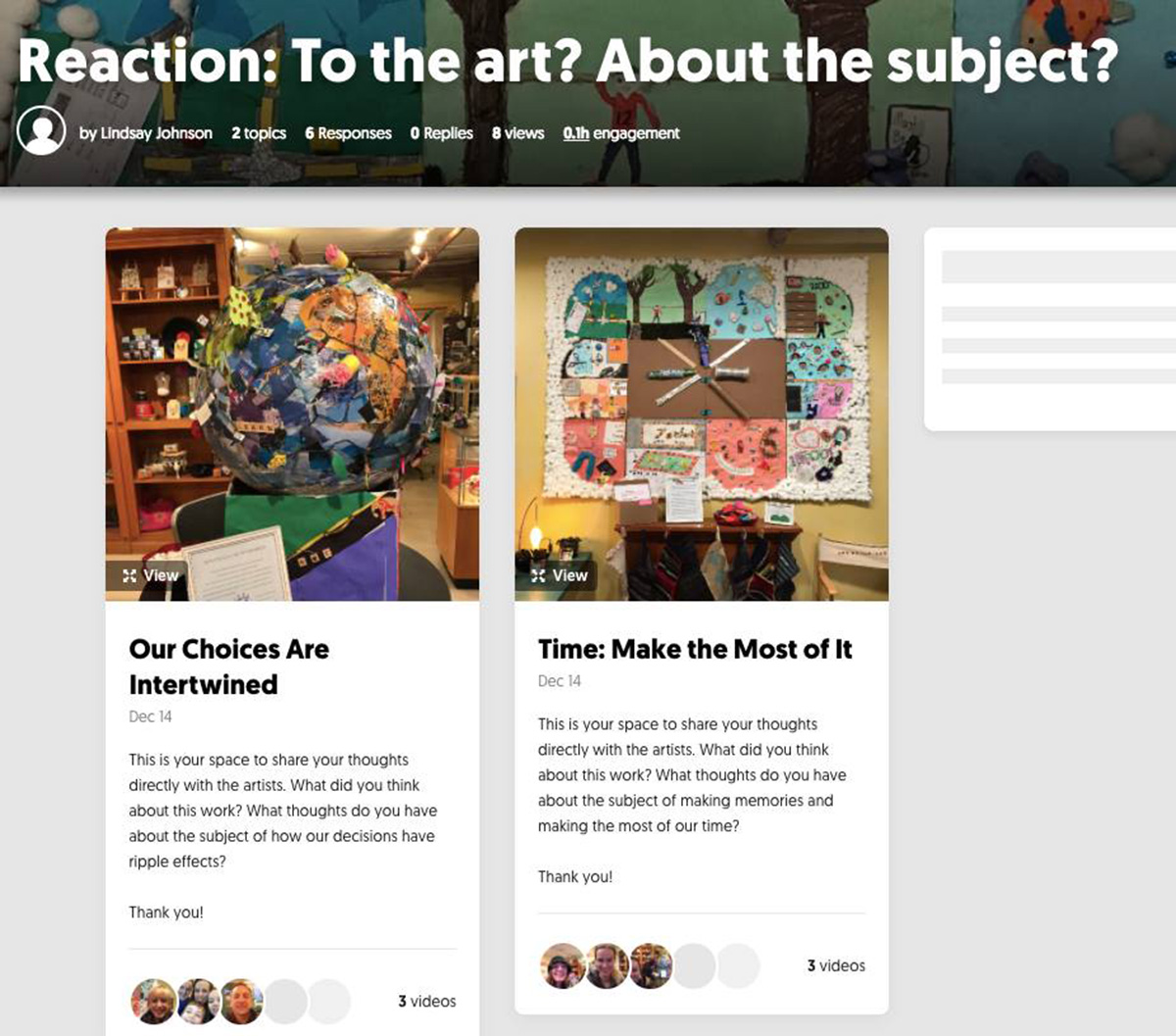
References + Resources
Lindsay Johnson
Roosevelt Middle School
About Lindsay Johnson
Lindsay Johnson began her teaching career in Chicago Public Schools as an elementary teacher and currently teaches art to 6th–8th grade students in River Forest. She is passionate about creating inclusive spaces with innovative and equitable opportunities for all students. A former Technology Integration Specialist, Lindsay is curious about public art and the memorable, interactive experiences that occur when art and technology intersect.
Lindsay Reflects on the Project
The highlight of this project was when a student exclaimed, “This is my favorite class!” Making work that an authentic audience would interact with was exciting for our students.
We did encounter obstacles. This project was implemented with two different classes: a morning and afternoon Humanities class. Both were very large in size, about thirty, but the morning class has better synergy and cooperated very well with each other. The specific mix of personalities in the afternoon class made it more difficult to come to agreement at every decision-making step of the project. If we were to do it over, we might have just tried this with one set of students.
Additionally, the deadlines made it helpful to get the students to wrap up their ideas and start construction, but at times those deadlines were stressful. We became product and not process oriented, as the students felt a rush to hurry up and finish. If we were to do that differently, I would advise the teacher to reach out to a gallery not at the beginning of the planning stages but after the students have formed an idea and have started producing some work. This would also be helpful for the gallery owner to know what to expect in their space.
This project was done in a co-taught classroom, with a technology specialist and classroom teacher. The technology specialist was not always in the room, and would sometimes miss critical conversations. We would advise that if co-teaching, teachers should have a planning calendar or document that helps them stay organized and aligned.
